Free Relief - The Great Free Stroke Give-Away
Last week we shared information about penalty areas and the strokes incurred for penalty relief. This week let’s talk about FREE RELIEF! The complete details are lengthy, covering a multitude of conditions and options. Here we will condense the most common conditions for free relief.
There are many places that your ball might land on the golf course that provide free relief – or no added penalty strokes – and allow you to move your ball away from (or out of) an obstruction or move the obstruction away from your ball. Nearest Point of Complete Relief is used to determine any allowable movement.
Nearest Point of Complete Relief Explained
While the concept of Nearest Point of Complete Relief (NPCR) is simple, it is often misunderstood or misused.
NPCR may be used when your ball comes to rest under the following conditions:
- Abnormal Course Conditions – including animal holes, ground under repair, immovable obstructions, cart paths or temporary water (where the condition physically interferes with your ball, your stance or your swing.)
- Dangerous Animals (such as venomous snakes, stinging bees, alligators, fire ants or bears.)
- Embedded ball (meeting conditions outlined below.)
How to Determine the Nearest Point of Complete Relief
Reference Point – the spot nearest to where your ball came to rest that provides complete relief from any interference from the obstruction – including your ball, your stance and your swing. The Reference Point must remain in the general area of the course.
Relief Area – In many instances, a Relief Area is also provided and is determined from the Reference Point. When available, the Relief Area is defined as 1 club length in all directions from the reference point (including left, right and behind) providing that the resulting area continues to be outside of the original obstruction or another obstruction, no closer to the hole and is in the general area of the course. This generally produces an available drop area that is in a semi-circle or quarter-circle shape.
NOTE: There are some instances where the Reference Point IS the Nearest Point of Complete Relief and is the only available site of free relief. No other Relief Area allowance is available.
Let’s look at some graphics that illustrate a few examples of Nearest Point of Complete Relief:
Abnormal Course Condition such as Temporary Water
or Ground Under Repair
Mark the Reference Point at the Nearest Point of Complete Relief that is behind where your ball came to rest and away from the obstruction. Measure your Relief Area using 1 club-length. Drop your ball in the Relief Area.
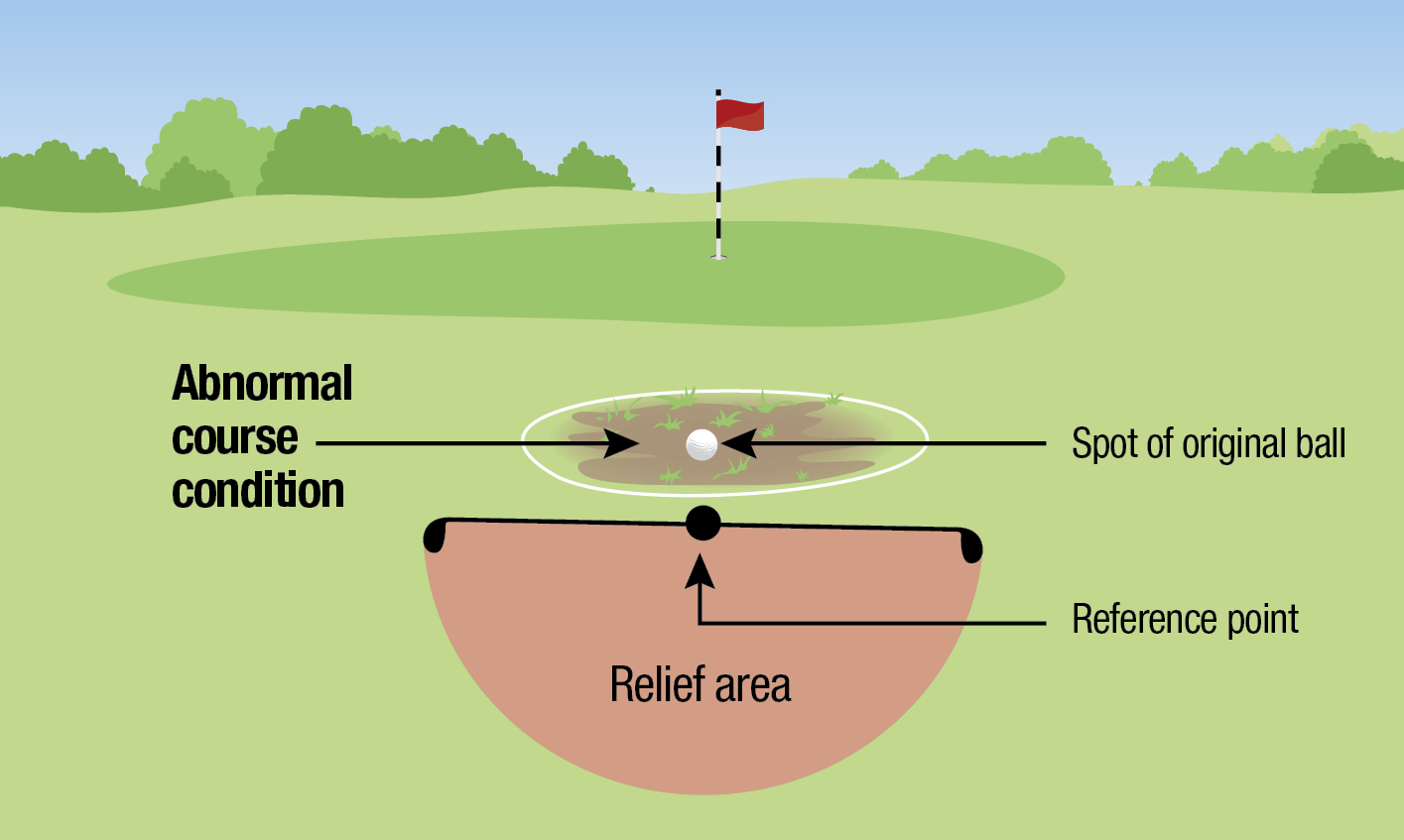
Cart Path – also an Abnormal Course Condition
(The example we have all been waiting for!)
The graphic below assumes you are a right-handed golfer and shows the Nearest Point of Complete Relief when your ball comes to rest on the cart path. It also illustrates the Nearest Point of Complete Relief when your ball comes to rest just off the cart path BUT your feet would be on the cart path. In both cases the Reference Point and subsequent Relief Area are based on where your ball, your swing and your stance are free from the obstruction.
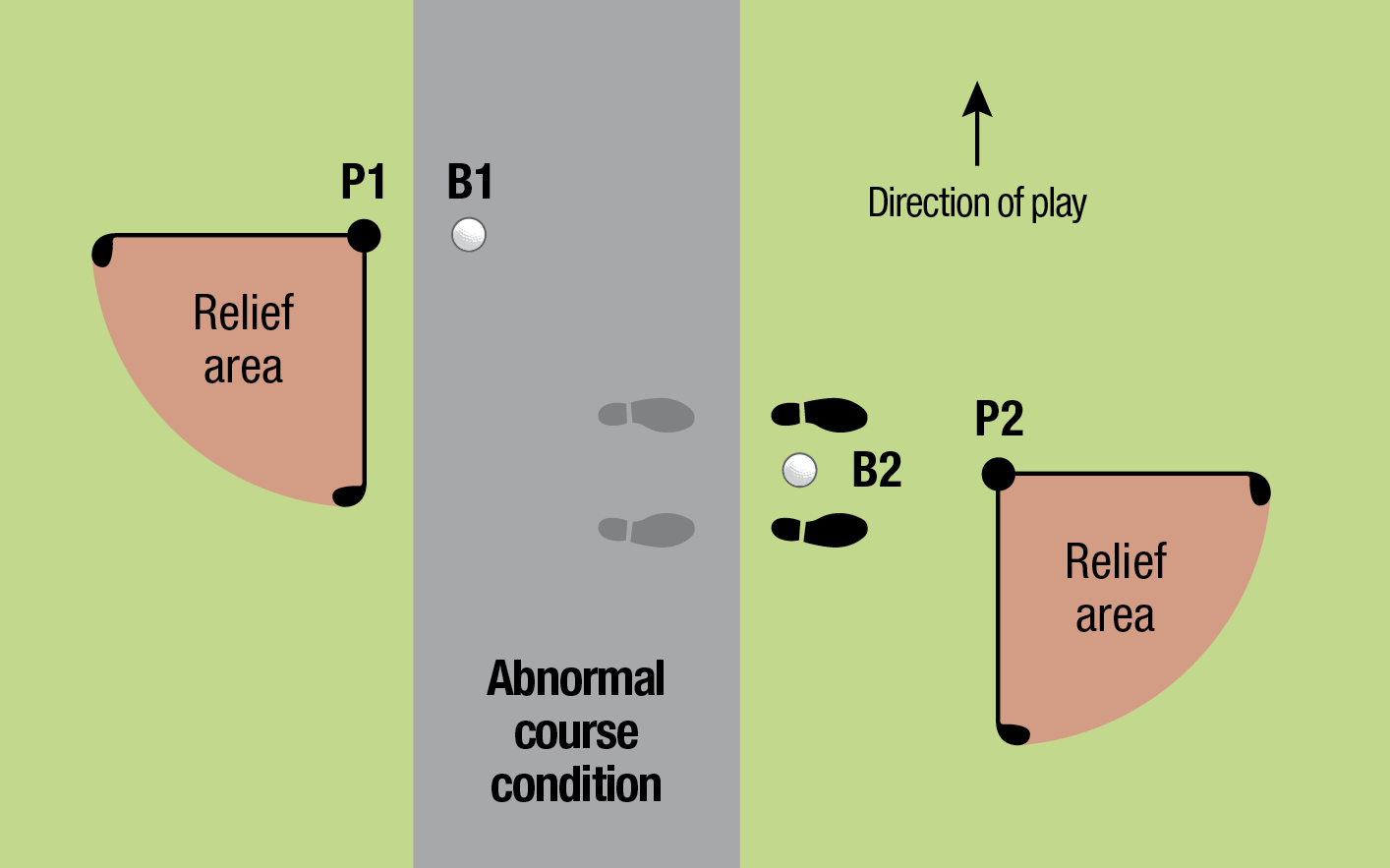
It’s important to note, the NPCR is NOT necessarily determined by the edge of the path closest to your ball - and it is often different for right-handed and left-handed players. If you are in doubt of your NPCR – and before moving your ball - it is best to measure your Reference Point on both sides of the cart path. The NPCR is the Reference Point nearest to where your ball came to rest.
Remember, there is only 1 Nearest Point of Complete Relief! You cannot choose the Reference Point that provides the most advantageous lie – or even a playable lie.
Please take a look at this great video. It details 4 mistakes when taking free relief from a cart path and also clearly shows how to take relief for both right-handed golfers and left-handed golfers. Relief From Cart Path
Relief from Embedded Ball
Here are examples of an embedded ball and how to take relief if your ball is embedded in the general area of the course.
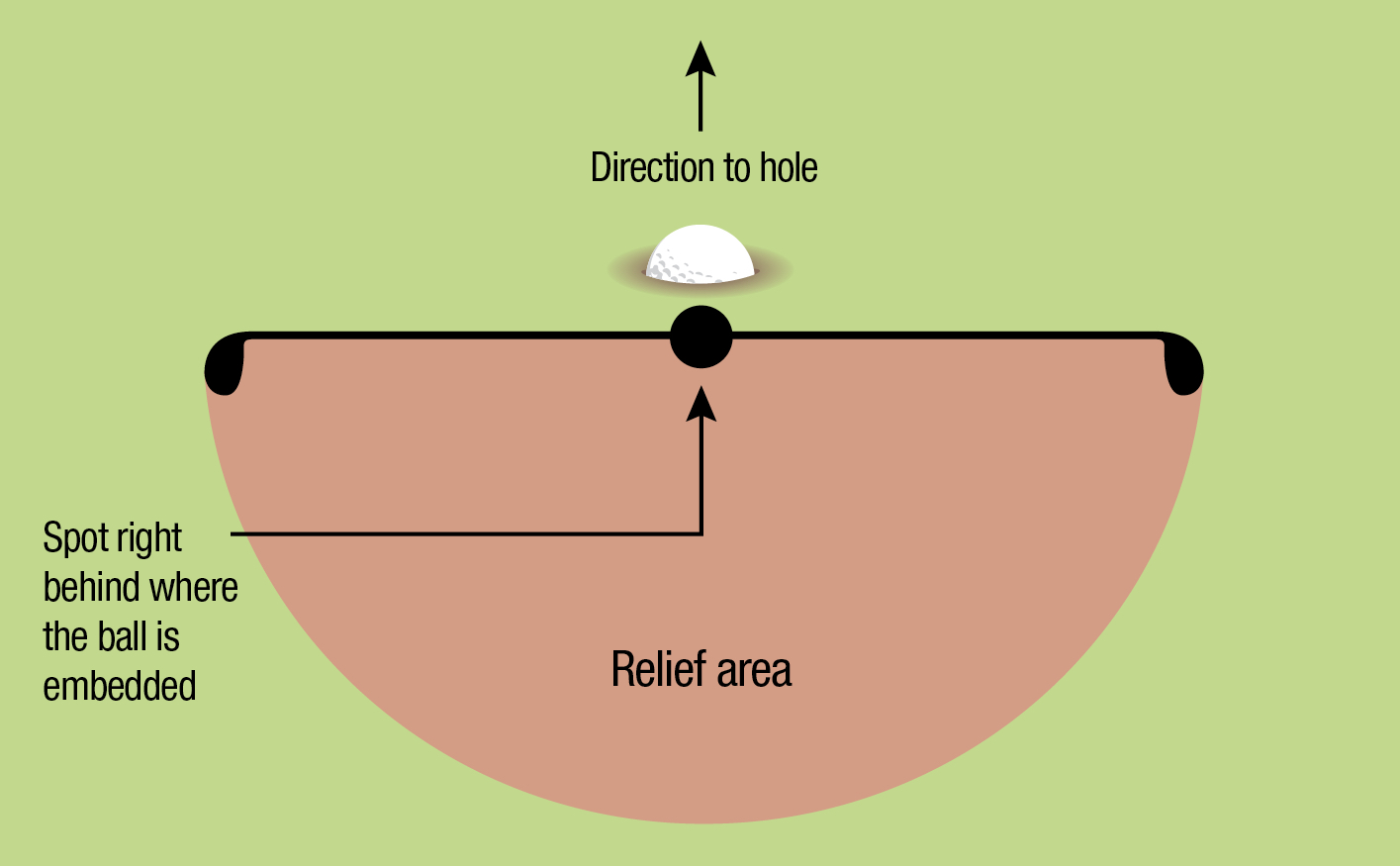
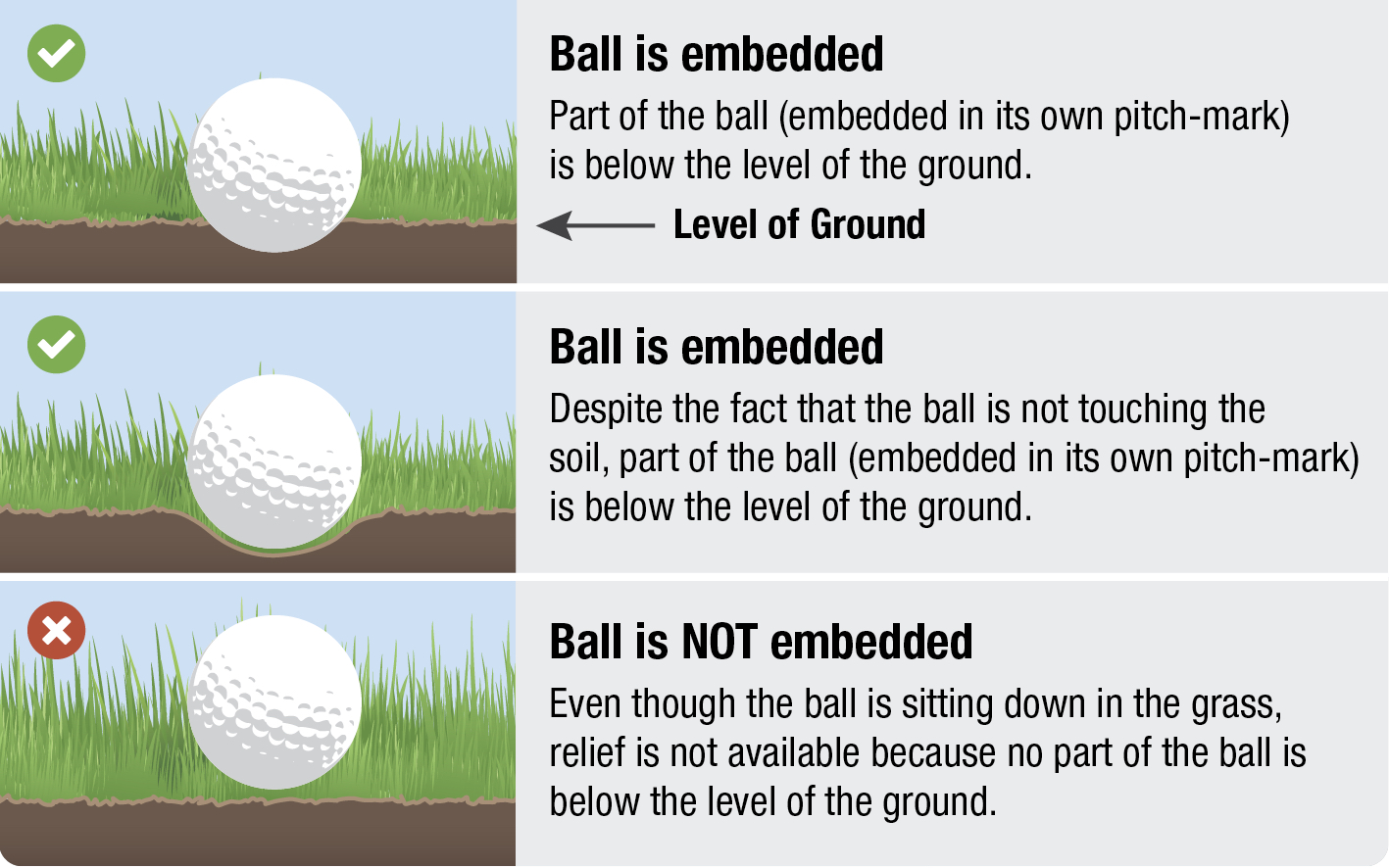
What if your ball is embedded in or under the lip or wall of the bunker – and no part of the ball touches the sand? Then it is not considered to be in the bunker and is considered to be in the General Area. You are entitled to free relief! As there is no general area directly behind your embedded ball as detailed in the above graphic (the bunker is behind your ball) find the spot closest to your ball, no closer to the hole and that is in the general area. This is the Reference Point. Your Relief Area is 1 Club length on either side of this Reference Point. NOTE: This relief will probably not provide you with an easy shot, but it is free relief!
Here is a good video demonstrating this scenario.
Relief From Embedded Ball Above Bunker
Relief on the Putting Green
Free relief is available when your ball comes to rest on the putting green and is obstructed by abnormal course conditions or dangerous animals. Determine the NPCR and play the ball from there. No other additional relief area allowance is available.
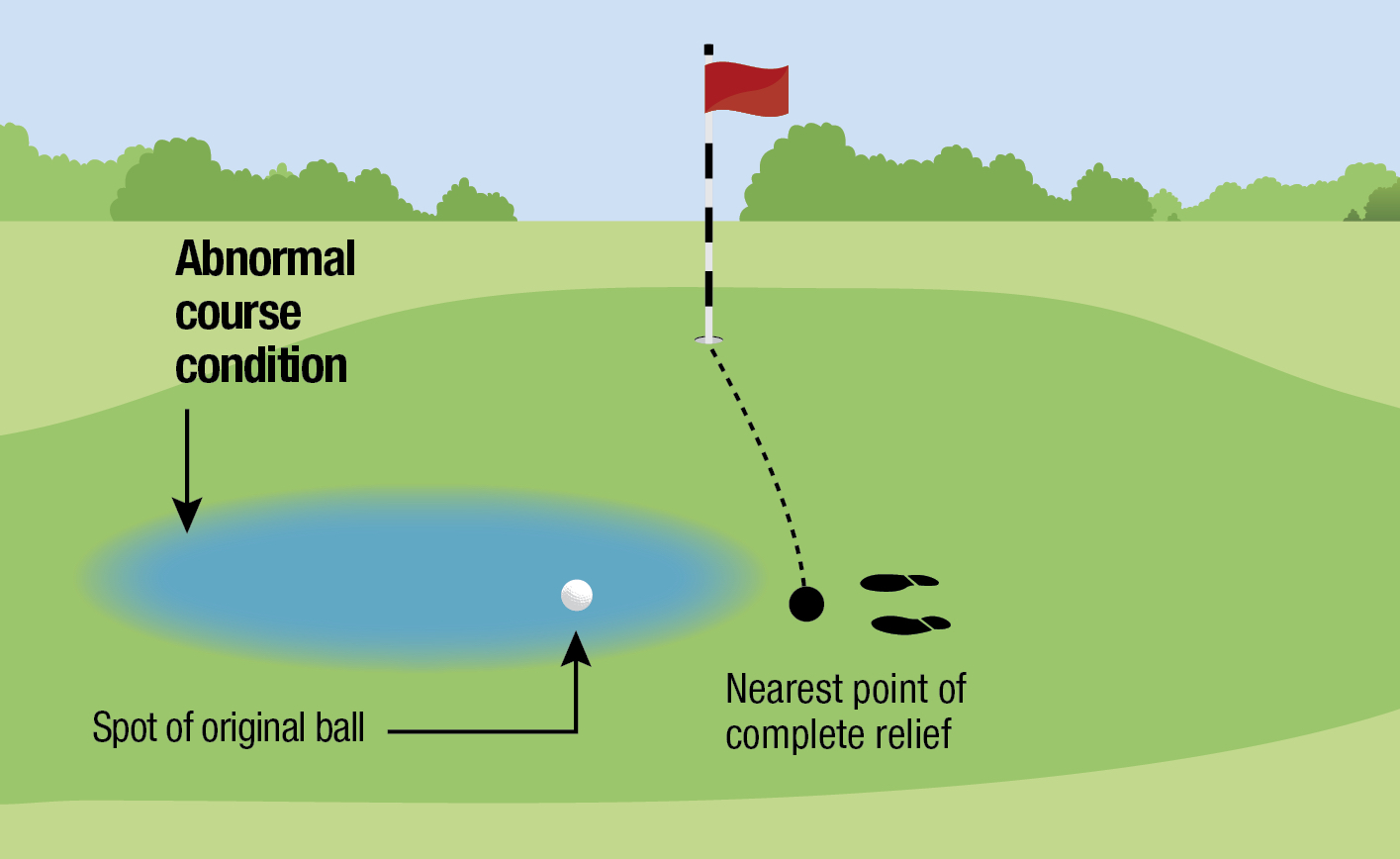
Free relief is also available should your ball come to rest on the putting green and on or under a moveable obstruction – like a towel or glove, for instance. Remove the obstruction and replace your ball on the original spot. The original spot becomes the Reference Point and is the Nearest Point of Complete Relief. No other relief area allowance is available.
Relief from Bunker
You have two relief options when your ball comes to rest in or on an Abnormal Course Condition – like temporary water in the bunker, or should your ball (or you!) be obstructed by a dangerous animal.
- Option 1: Provides free relief employing NPCR with the ball staying in the bunker.
- Option 2: Provides Back-on-the-Line option with 1-stroke penalty but allows you to move your ball out of the bunker.
Did you know? You can always move your ball out of the bunker, using the Back-On-The Line option - even if there is no interference and you just don't want to hit out of the sand. Beware though! This option comes with a 2-stroke penalty!
As always, count the stroke that put you in the bunker in the first place.
Sorry folks, if your ball is embedded in the sand in the bunker, play it as it lies or declare it unplayable. (More on Ball Unplayable next week.)
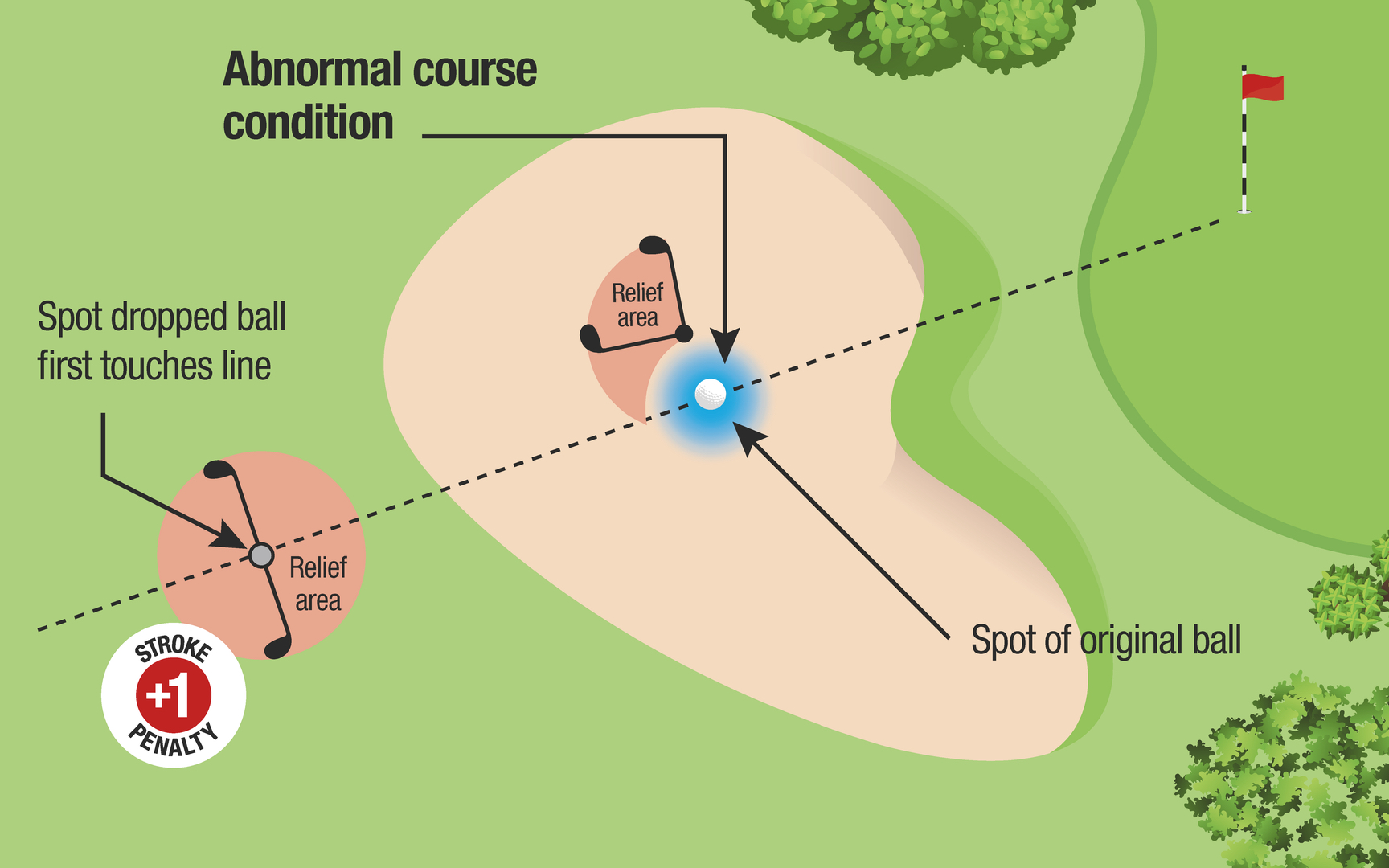
It’s important to note that relief from Abnormal Course Conditions may result in better or worse conditions. Players may elect to play the ball as it lies (except from Ground Under Repair or No Play Zones.)
Free Relief from Moveable Obstructions
Moveable Obstructions are defined as artificial objects that are not integral parts of the course and that can be moved with reasonable effort, without damaging the object or the course - such as rakes, distance and penalty markers, your or other players’ equipment.)
Where your ball comes to rest IN or ON a Moveable obstruction
When your ball comes to rest in or on a moveable obstruction – like a towel - anywhere in the general area (but not on the putting green, see above) lift your ball and remove the obstruction. Once the object is removed the Reference Point is the spot where your ball originally came to rest – or as close as possible to that spot. Next define your Relief Area (1 club length on either side of the Reference Point.) Drop your ball in the Relief Area.
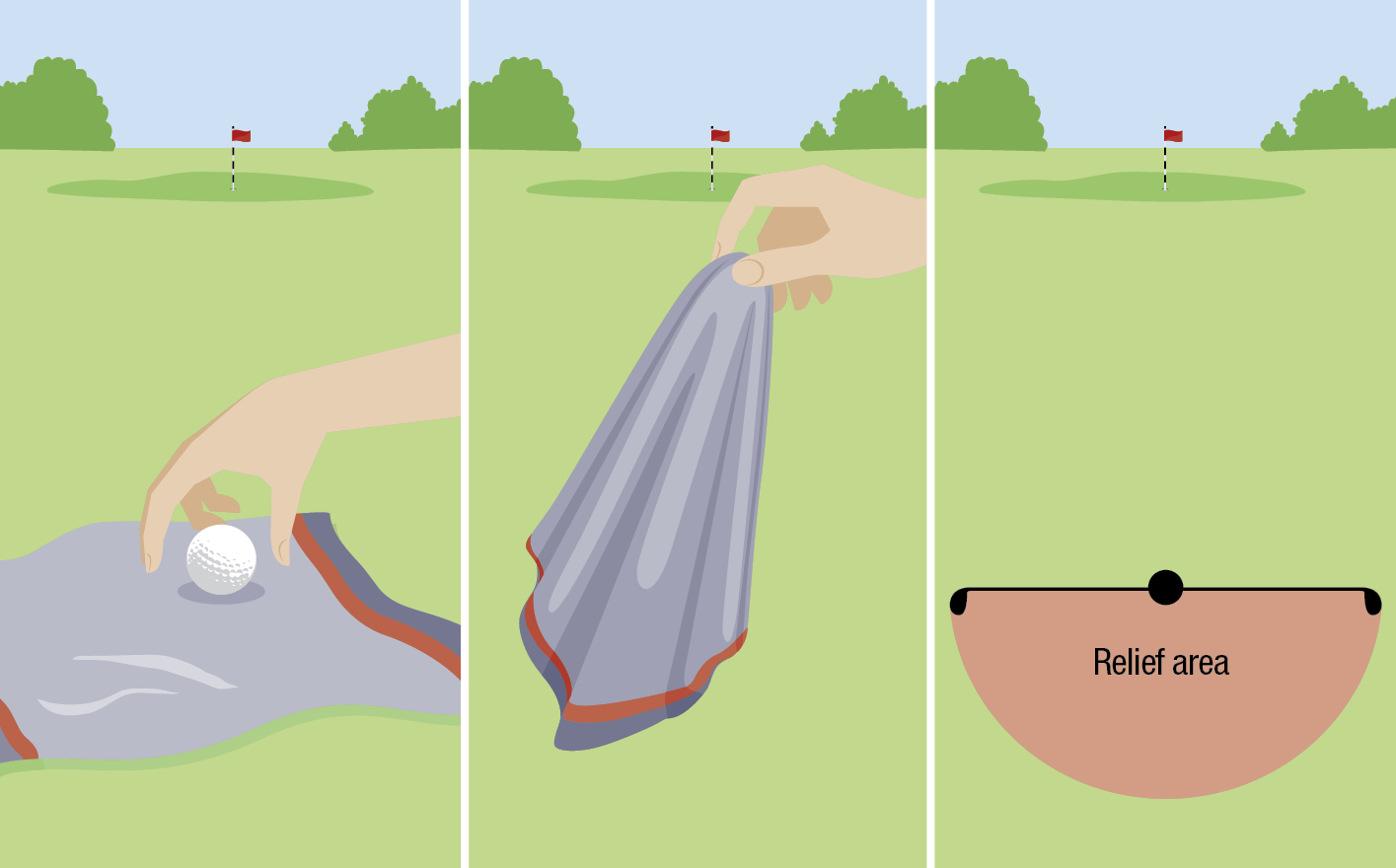
What if your ball comes to rest NEAR OR AGAINST a moveable obstruction?
When your ball comes to rest near or against a moveable obstruction, you may move the object with no penalty. If, in doing so, your ball moves, replace it to the original spot – also no penalty. Let’s look at an example when your ball comes to rest against a rake.
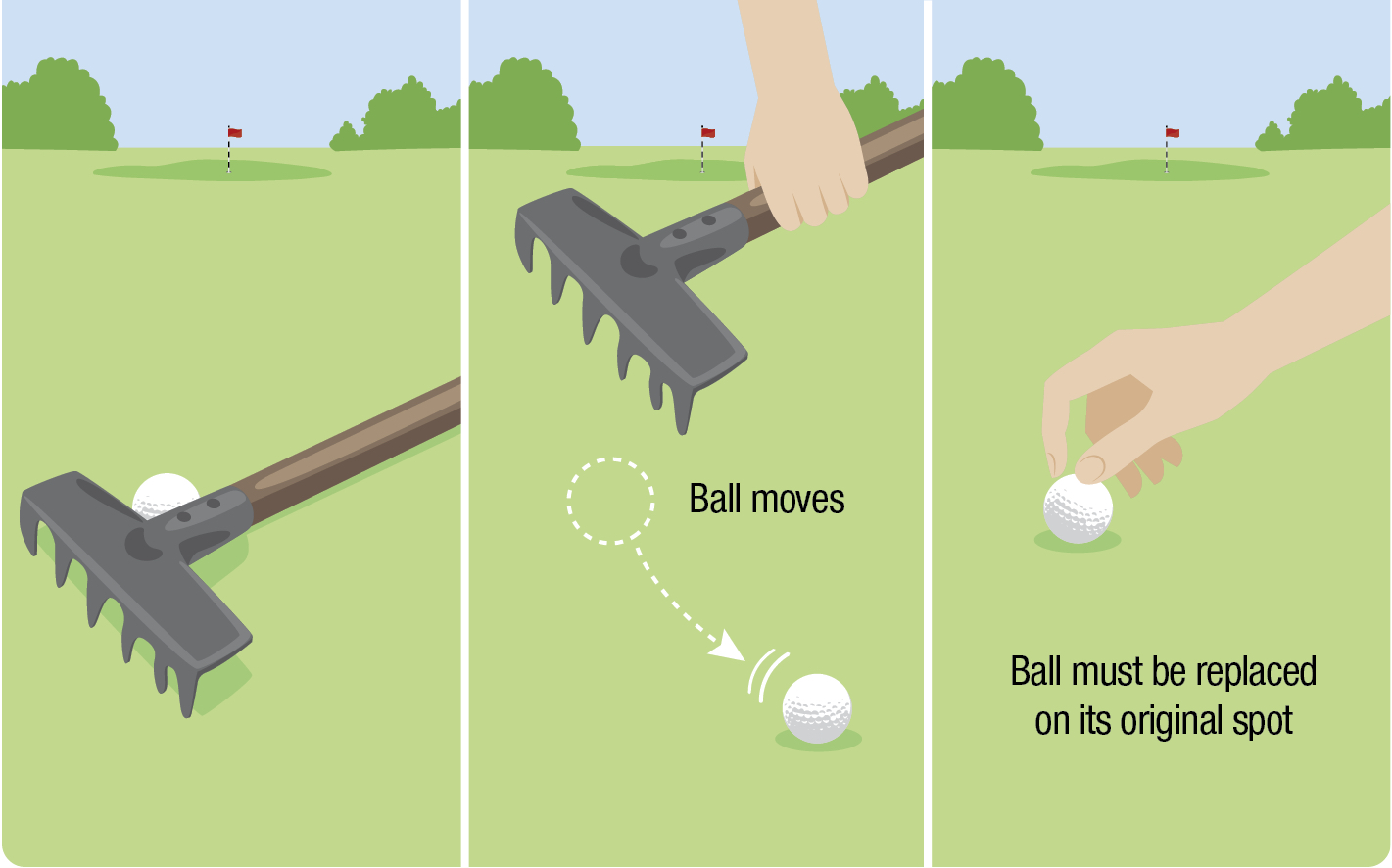
Free Relief from Loose Impediments (sticks, leaves, grass, debris, etc. that are NOT attached to the ground or living plant/tree/bush.)
You may remove loose impediments near your ball anywhere on the course. Nearest Point Of Complete Relief does not come into play in this additional Free Relief scenario. There is no penalty to move loose impediments, UNLESS in doing so, your ball moves. If your ball moves, replace it to the original position and add a 1-stroke penalty.
Did you know? If the impediment is not loose, is still growing or attached or buried, you cannot move or remove it, bend it or adjust its position.
More details on the information we have covered in this and in last week’s Newsletter can be found in Rules 15, 16 & 17 in The Rules of Golf. Don’t have a Rule Book? We encourage you to get one so that you have a handy reference. While the rules can be accessed online, nothing beats paper in your golf bag. That said, the Golf Canada Mobile APP includes easy to access sections on the Rules of Golf. (Very useful for quick lookups providing internet access is strong out on the course.)
Next week we will conclude our Spring Rules Education Newsletter with a few additional rules that are in place to assist you in your game.
Also, stay tuned for details on the Spring Rules Clinic. This hands-on clinic, conducted by Barb Allan, Golf Ontario Rules Clinician, will take place out on our practice area and will offer tangible and visual examples of some of the most important rules.
If you have questions about any of the above information, please do not hesitate to contact us.
Your Rules & Handicap Committee
|
